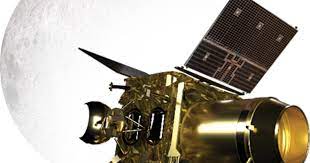Chandrayaan-2 was India's second lunar exploration mission, following Chandrayaan-1. It consisted of an orbiter, lander, and rover, all of which were developed in India. The mission was launched on July 22, 2019, by the Geosynchronous Satellite Launch Vehicle Mark III (GSLV Mk III) from the Satish Dhawan Space Centre in Sriharikota, India.
The orbiter successfully entered lunar orbit on August 20, 2019. The lander, named Vikram, separated from the orbiter on September 2, 2019, and began its descent to the lunar surface. However, communication with the lander was lost shortly before it was due to touch down on September 7, 2019. The Indian Space Research Organisation (ISRO) later confirmed that the lander had hard-landed on the Moon.

The orbiter continues to operate successfully in lunar orbit. It is carrying eight scientific instruments that are conducting a comprehensive study of the Moon. The orbiter has already made a number of important discoveries, including the detection of water ice in the Moon's polar regions.

Chandrayaan-2 was a significant technological achievement for India. It was the first Indian mission to attempt a soft landing on the Moon, and the orbiter is the most advanced spacecraft ever built by India. The mission has also made important contributions to our understanding of the Moon.
Despite the setback with the lander, Chandrayaan-2 is a major success for India's space program. The orbiter is continuing to make valuable scientific discoveries, and the mission has demonstrated India's ability to undertake complex space missions.
To know more about these missions,refer to the following links:
Back Chandrayaan 1 Chandrayaan 2 Chandrayaan 3